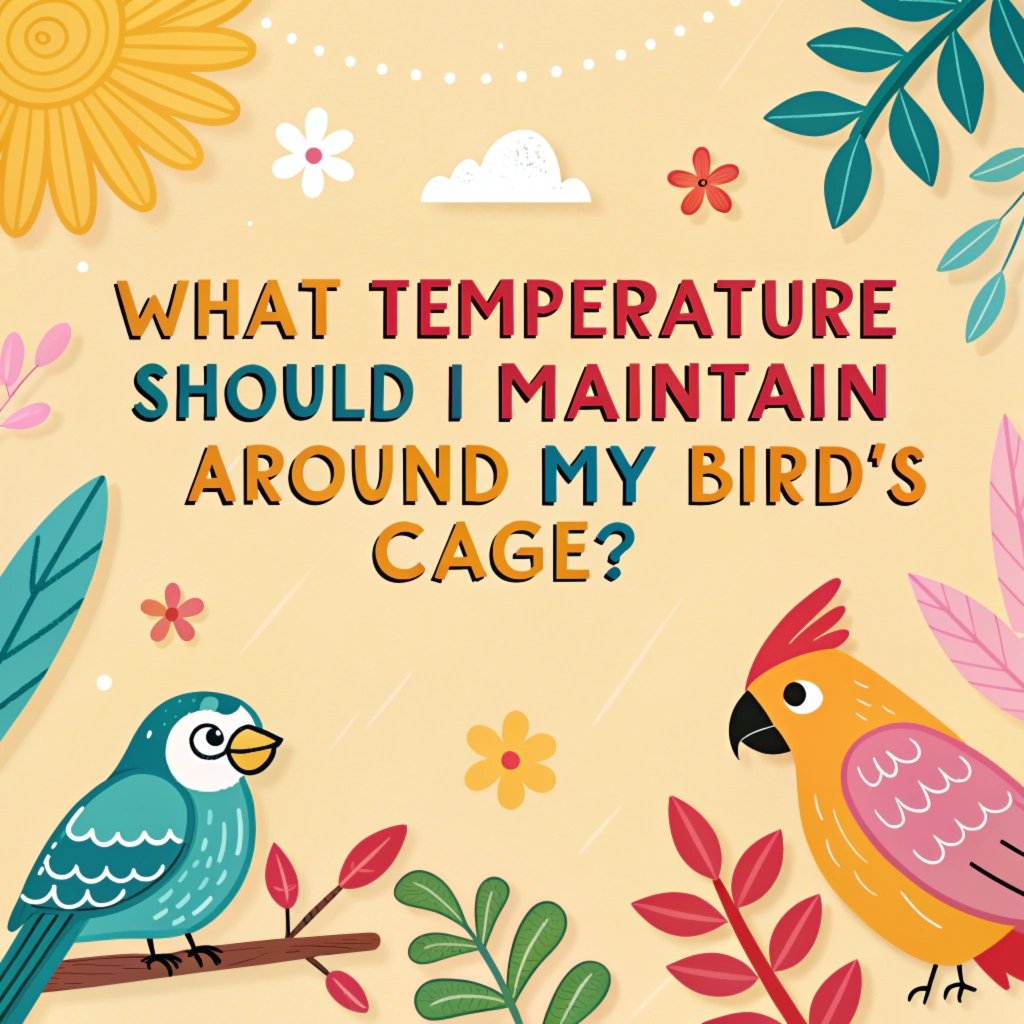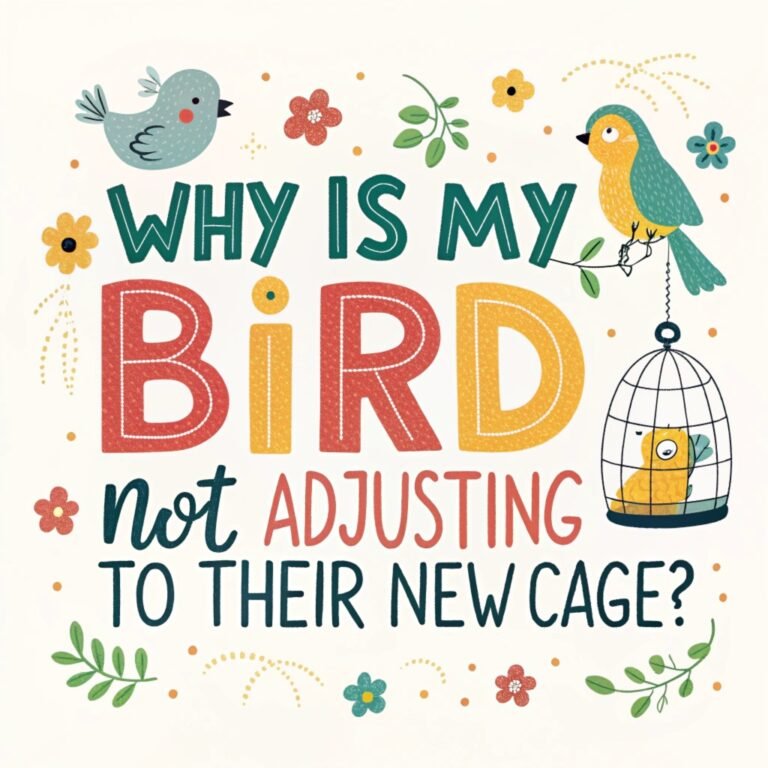What Temperature Should I Maintain Around My Bird’s Cage? – A Comprehensive Guide
One of the most important factors to consider is the temperature around your bird’s cage.
Creating the ideal environment for your feathered friend is crucial for its health and happiness.
Birds are sensitive creatures, and maintaining the right temperature can significantly impact their well-being.
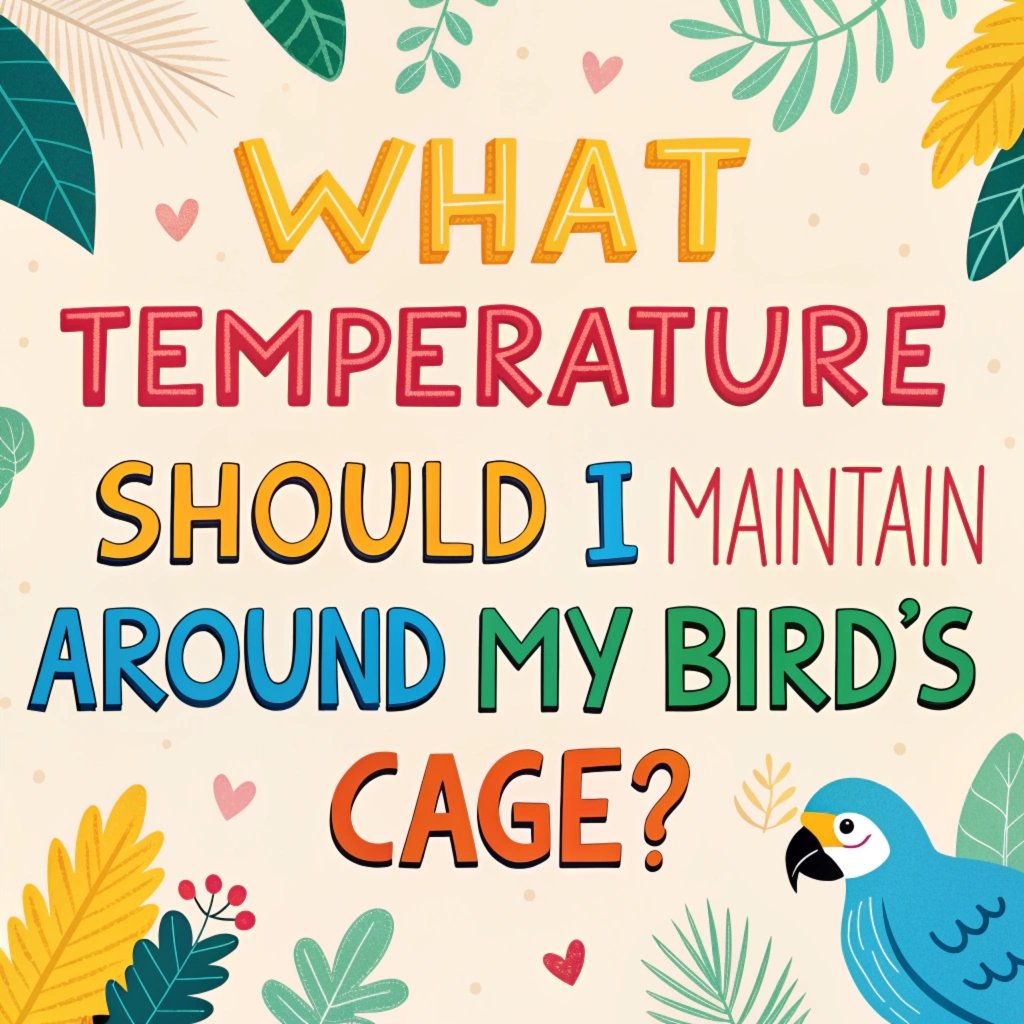
Key Takeaways
- Optimal temperature range: Most pet birds are comfortable in temperatures between 65°F and 80°F (18°C to 27°C).
- Species-specific needs: Different bird species have varying temperature requirements based on their natural habitats.
- Gradual acclimation: Birds can adapt to a wider temperature range if changes are introduced gradually.
- Monitoring is crucial: Regularly check the temperature around your bird’s cage using reliable thermometers.
- Signs of discomfort: Watch for behaviors like panting or fluffing feathers, which may indicate temperature-related stress.
- Avoid sudden changes: Maintain a consistent temperature, avoiding fluctuations of more than 10-15°F within 24 hours.
- Provide options: Offer your bird different perching areas with varying temperatures within the cage.
- Seasonal adjustments: Be prepared to make changes to your bird’s environment as seasons change.
- Humidity matters: Consider humidity levels alongside temperature for optimal bird comfort.
- Emergency preparedness: Have a plan in place for power outages or extreme weather conditions.
Understanding Bird Temperature Regulation
Birds are endothermic creatures, meaning they can regulate their body temperature internally. However, they still rely heavily on their environment to maintain optimal body heat.
In the wild, birds have various strategies to cope with temperature fluctuations, such as seeking shade, bathing, or puffing up their feathers for insulation.
In captivity, it’s our responsibility to provide an environment that allows them to regulate their temperature effectively.
Proper temperature control is essential for your bird’s metabolic processes, immune function, and overall well-being.
Understanding how birds naturally regulate their body heat can help us create a more suitable habitat in our homes.
Ideal Temperature Ranges for Common Pet Birds
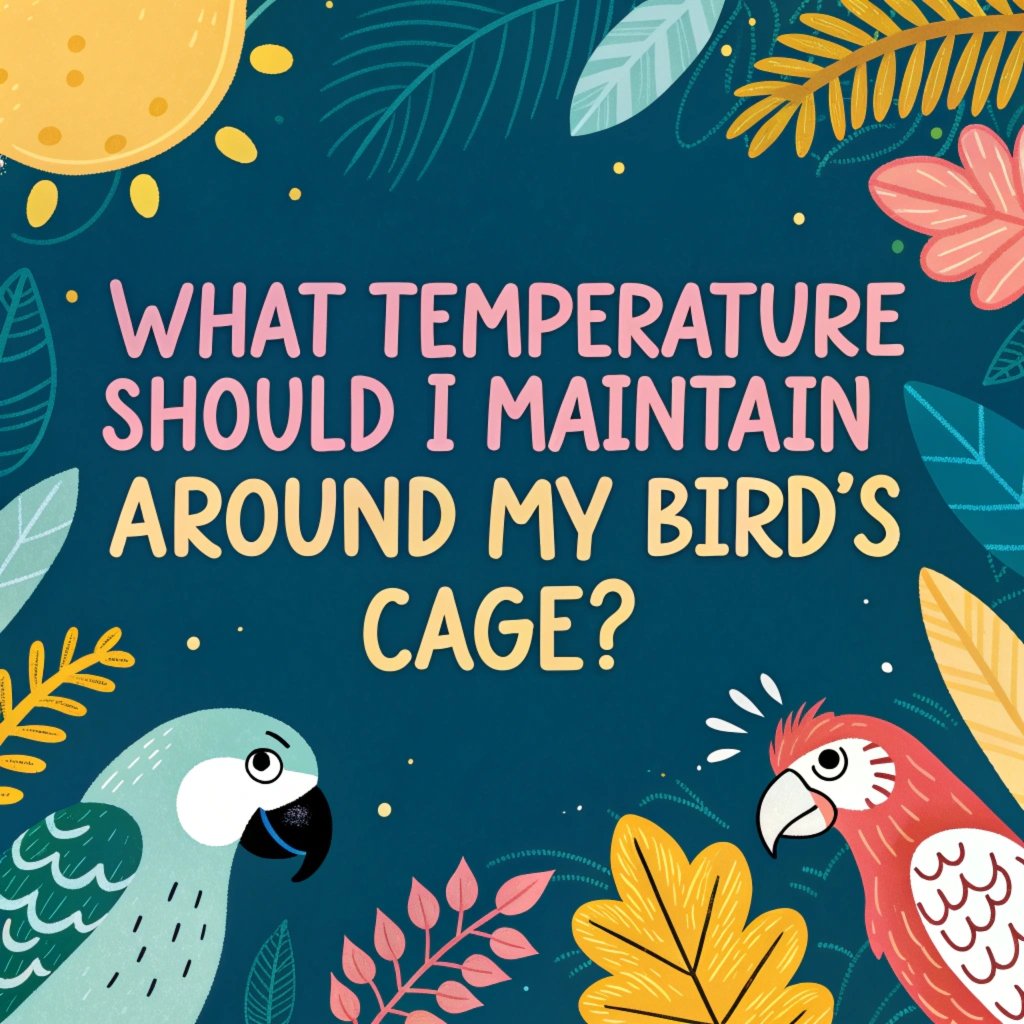
Different bird species have evolved to thrive in specific climates, and this affects their temperature preferences in captivity.
Tropical birds, such as parrots, cockatiels, and macaws, generally prefer warmer temperatures ranging from 70°F to 85°F (21°C to 29°C).
Temperate birds, including canaries, finches, and budgerigars, are comfortable in slightly cooler temperatures between 65°F and 75°F (18°C to 24°C).
Cold-climate birds, like some species of finches and doves, can tolerate cooler temperatures ranging from 60°F to 70°F (15°C to 21°C).
It’s important to research your specific bird species and consult with an avian veterinarian to determine the most appropriate temperature range for your pet.
The Dangers of Extreme Temperatures
Exposing your bird to temperatures outside its comfort zone can lead to serious health issues. Heat stress can occur when temperatures rise above 90°F (32°C), causing symptoms like panting, wing drooping, and lethargy.
In severe cases, it can lead to organ failure and death. Conversely, cold stress can occur at temperatures below 60°F (15°C), causing shivering, fluffed feathers, and reduced activity.
Prolonged exposure to cold can weaken the immune system and lead to respiratory problems. Being aware of these risks emphasizes the importance of maintaining appropriate temperatures in your bird’s environment.
Monitoring Temperature in Your Bird’s Environment
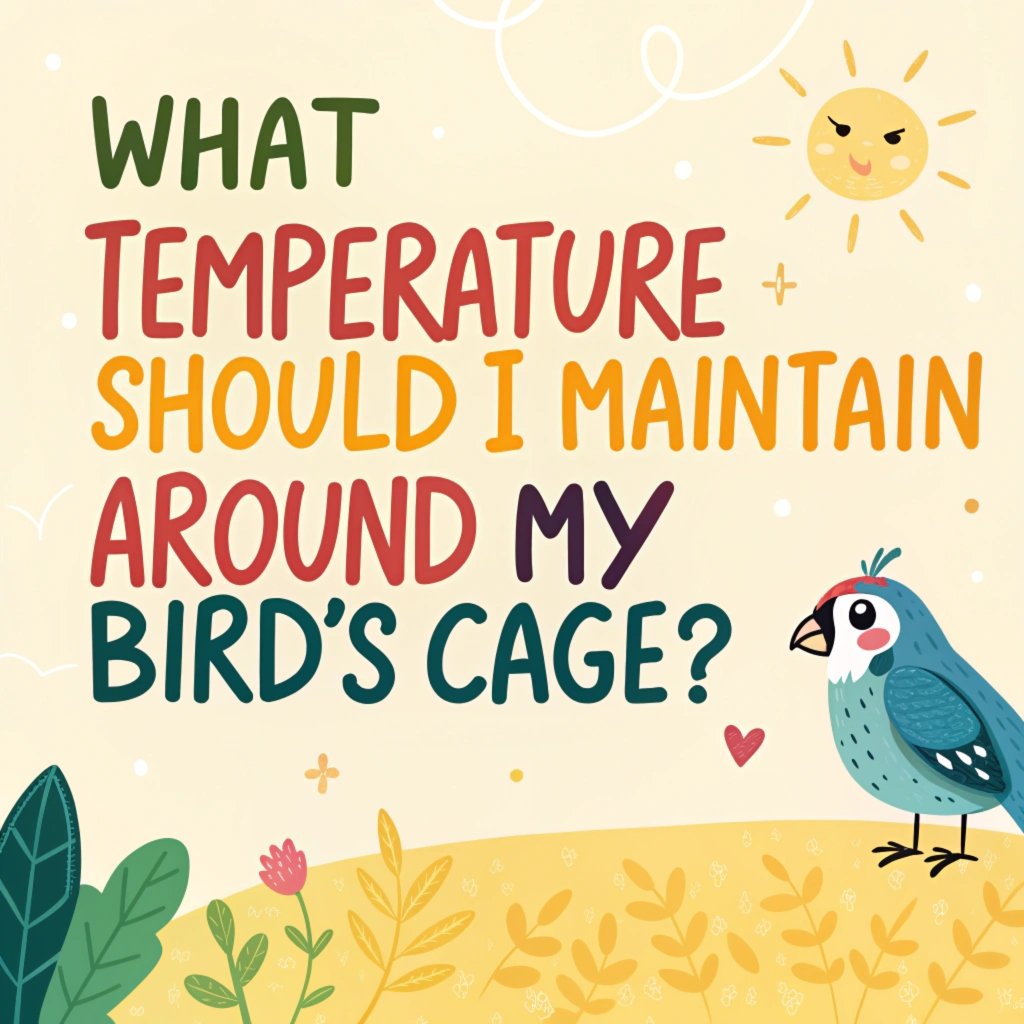
Regularly checking the temperature around your bird’s cage is crucial for maintaining a healthy environment.
Invest in a reliable digital thermometer with a remote probe to accurately measure the temperature at your bird’s level. Place the probe near your bird’s favorite perching spot to get the most accurate reading.
Some modern smart monitoring systems offer real-time temperature tracking and can send alerts to your smartphone if temperatures fluctuate beyond safe levels.
Additionally, consider using a hygrometer to monitor humidity levels, as this can also affect your bird’s comfort and health.
Creating Temperature Zones in the Cage
Providing temperature variations within the cage allows your bird to choose its preferred spot. Place perches at different heights, as warm air rises and cooler air settles at the bottom.
You can create a warm zone by positioning a safe heat source near one area of the cage, while leaving other areas cooler.
This mimics natural temperature gradients found in the wild and allows your bird to thermoregulate by moving to different areas.
Ensure that any heat sources used are bird-safe and cannot be directly contacted by your pet to prevent burns or accidents.
Seasonal Adjustments for Bird Comfort
As seasons change, you may need to adjust your bird’s environment to maintain optimal temperatures.
During summer months, provide extra ventilation, shade, and cooling options like misters or shallow bathing dishes.
In winter, you might need to increase the ambient temperature slightly or provide warm snuggle huts for your bird to retreat to.
Always make these changes gradually to allow your bird time to acclimate. Be particularly vigilant during transitional seasons when outdoor temperatures can fluctuate dramatically, and adjust your indoor climate control accordingly.
The Role of Humidity in Temperature Perception
Humidity plays a significant role in how birds perceive temperature. High humidity can make warm temperatures feel even warmer, while low humidity can make cool temperatures feel cooler.
Most birds are comfortable with humidity levels between 40% and 70%. In dry climates or during winter when indoor heating can reduce humidity, consider using a humidifier to maintain appropriate moisture levels.
Conversely, in humid environments, proper ventilation and dehumidifiers can help prevent the growth of mold and bacteria while keeping your bird comfortable.
Avoiding Drafts and Direct Sunlight
While maintaining the right temperature is important, it’s equally crucial to protect your bird from drafts and direct sunlight.
Cold drafts from windows, doors, or air conditioning units can cause localized temperature drops that may stress your bird.
Similarly, direct sunlight through windows can create hot spots in the cage, potentially leading to overheating.
Position the cage away from windows and doors, and use cage covers or window treatments to control light and temperature.
If you must place the cage near a window, ensure there’s always a shaded area for your bird to retreat to.
Temperature Considerations for Outdoor Aviaries
If you have an outdoor aviary, temperature management requires extra attention. Outdoor birds can generally tolerate a wider temperature range, but you must provide adequate protection from extreme conditions.
In hot weather, ensure plenty of shade, ventilation, and fresh water for bathing and drinking. During cold spells, provide wind barriers, heated perches, and insulated shelter areas.
Always have a plan to bring birds indoors if outdoor temperatures become too extreme. Monitor weather forecasts regularly and be prepared to take action to protect your birds from sudden temperature changes.
Signs Your Bird is Too Hot or Cold
Observing your bird’s behavior is key to determining if the temperature is comfortable. Signs that your bird is too hot include panting, holding wings away from the body, and appearing lethargic.
If your bird is too cold, you may notice fluffed feathers, shivering, and reduced activity. Other indicators include changes in appetite, unusual vocalizations, or seeking out warm or cool spots in the cage.
Pay attention to these cues and adjust the environment accordingly. If you notice persistent signs of discomfort, consult with an avian veterinarian to rule out any underlying health issues.
Using Heat Lamps and Heating Devices Safely
When additional heat is needed, heat lamps or other heating devices can be useful. However, it’s crucial to use these safely to prevent accidents or injury.
Ceramic heat emitters are often preferred as they provide heat without light, which can disrupt sleep patterns. Infrared bulbs are another option but should be used cautiously to avoid overheating.
Always place heating devices outside the cage where birds cannot come into direct contact with them. Use a thermostat to regulate the temperature and prevent overheating.
Regularly check all heating equipment for signs of wear or damage to ensure continued safe operation.
The Impact of Temperature on Bird Behavior and Health
Temperature plays a significant role in various aspects of bird behavior and health. Proper temperature regulation is essential for maintaining a healthy metabolism, supporting the immune system, and promoting natural behaviors.
Birds in comfortable temperatures are more likely to engage in positive activities like playing, singing, and socializing.
Conversely, birds exposed to inappropriate temperatures may become stressed, leading to behavioral issues or health problems.
Temperature can also affect breeding behaviors, molt cycles, and appetite. By maintaining optimal temperatures, you’re supporting your bird’s overall well-being and encouraging a happy, active lifestyle.
Emergency Preparedness for Temperature-Related Issues
Being prepared for temperature-related emergencies is crucial for bird owners. Have a plan in place for power outages, extreme weather events, or equipment failures that could affect your bird’s environment.
Keep emergency heating or cooling devices on hand, such as battery-operated fans or hand warmers.
Know the signs of heat stress and hypothermia in birds, and be prepared to provide immediate first aid if necessary.
Have the contact information for an avian veterinarian readily available in case professional help is needed.
Regular drills and checks of your emergency equipment can ensure you’re always ready to protect your feathered friend in any situation.
Acclimating New Birds to Your Home’s Temperature
When introducing a new bird to your home, it’s important to consider its previous environment and acclimate it gradually to your home’s temperature.
Start by maintaining a temperature similar to what the bird was accustomed to, then slowly adjust it over several days or weeks to reach your desired range.
This gradual transition helps reduce stress and allows the bird’s body to adapt. During this period, monitor your new pet closely for any signs of discomfort or stress.
Provide plenty of options for the bird to regulate its own temperature, such as various perching heights and cozy hideaways.
FAQs
What is the ideal temperature range for most pet birds?
Most pet birds are comfortable in temperatures between 65°F and 80°F (18°C to 27°C). However, specific requirements can vary depending on the species, so it’s important to research your particular bird’s needs.
How can I tell if my bird is too hot or cold?
Signs of overheating include panting, holding wings away from the body, and lethargy. Signs of being too cold include fluffed feathers, shivering, and reduced activity. Always observe your bird’s behavior for indications of discomfort.
Is it okay to use a heat lamp for my bird?
Heat lamps can be used safely if placed outside the cage where the bird cannot come into direct contact with them. Always use a thermostat to regulate the temperature and prevent overheating.
How often should I check the temperature in my bird’s environment?
It’s best to check the temperature at least twice daily, especially during extreme weather conditions or seasonal changes. Using a digital thermometer with a remote probe can make this task easier and more accurate.
Can birds tolerate temperature fluctuations?
While birds can adapt to some temperature changes, it’s best to avoid fluctuations of more than 10-15°F within a 24-hour period. Gradual changes are less stressful for birds than sudden ones.

Hello, I’m Amelia White, the founder of birdsfanatic.com. As a lifelong bird enthusiast and spiritual seeker, I’ve always been fascinated by the mystical connections between birds and the human experience. On this site, I share my knowledge and insights into the symbolic meanings and spiritual significance of various bird species, exploring their roles in mythology, folklore, and cultural traditions. Join me on this journey into the world of birds, where we’ll discover the hidden wisdom and guidance that these magnificent creatures have to offer.

